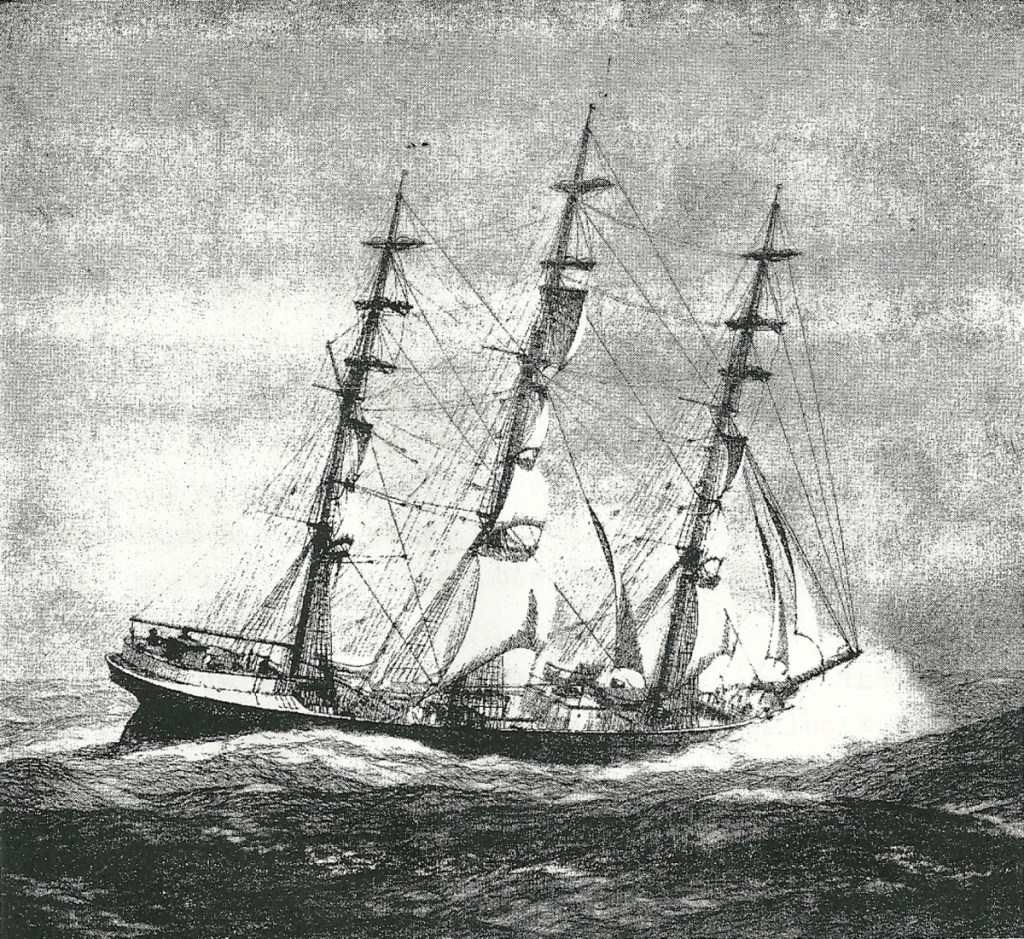As a native Mainer, I’m descended from a long line of sea captains, mariners and ship carpenters who sailed from Searsport and Stockton Springs. According to the Penobscot Marine Museum archives, Searsport sea captains made up 10 percent of the merchant vessel masters in the United States in 1880. Seafaring careers were a family tradition passed down from father to son. Many of their families lived in beautiful wood or brick mansions, lavishly furnished with artifacts from faraway places.
One of my sea captain ancestors married a young woman named Georgia from Searsport, and they spent their honeymoon at sea. This brave girl wrote an action-packed account of their trip around Cape Horn. Miraculously, her 12-page journal survives and can be read in the Penobscot Marine Museum archives. Georgia called her log “Our Wedding Trip Around Cape Horn.”
The couple sailed on a fully rigged three-masted white iron vessel built in 1886 in England. The name of this ship was the Bangalore. It left Searsport in the fall of 1906 with a crew of 20 men, a carpenter, cook, steward, first and second mate, a bosun and a cabin boy. The Bangalore carried a cargo of 2,604 tons of coal, bound for San Francisco. Coal, being combustible, caught on fire periodically when it got too hot down in the hold. Georgia wrote that several times the crew had to put out coal fires by digging trenches and filling them with water. Some of the coals were brought up in buckets and thrown over the side of the ship. This operation continued until the ship’s crew extinguished the fire.
After 2½ months of weathering severe storms lasting for several days, the Bangalore rounded the Horn and headed north toward California. When they reached San Francisco, they unloaded the coal and prepared the hold for a load of sugar to be taken on in the Hawaiian Islands. How dirty it must have been from the coal cargo!
Georgia wrote that the sails needed constant repair from fierce winds and storms, so she and her captain husband spent much time threading needles and mending them. He taught her how to navigate by day and also by the night stars with a sextant. She made it clear in her journal that she very much enjoyed navigating by the stars.
What was supposed to be a three-month-long honeymoon turned out to be almost a year. More storms, heavy seas, sickness and death of the bosun, dead calms and headwinds slowed them down considerably before they reached home in Searsport.
The end of “Our Wedding Trip Around Cape Horn” revealed that Georgia did not venture on the high seas again. She and her husband had three daughters and lived in Brooklyn, New York, for the rest of their married life, where her husband worked for a family shipping firm.
Recently I read a news article in the Press Herald about sails coming back to help propel large ships from continent to continent. Oil tankers and maritime vessels are beginning to use “rotor sail” technology that will cut carbon emissions from fossil fuels. This type of sail is a very tall column that converts wind into thrust, an idea first thought of nearly a century ago.
Both the old and the newest technologies have harnessed and are harnessing the clean energy of the endless winds. We all just need to be as brave as Georgia to help the planet Earth survive.
Comments are not available on this story.
Send questions/comments to the editors.


